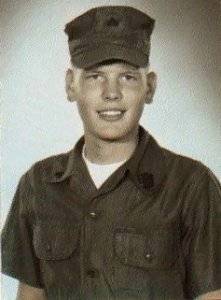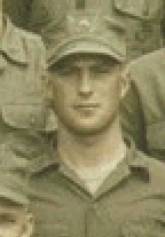To: Craig (Slaughter) 10/24/02
Thanks for all of the fill-in and contacts. I was on the horn with Hoppy for 2+ hours last night just prattling the inanity. Did I ever explain to you the real significance of you and me (an 0331 and an 8404) doing first aid together in San Diego? You certainly must be aware of the friendly fire bombing incident December 10, 1966 behind the Razorback. We had incurred a number of casualties the night before and had carried the dead and wounded for more than ten hours to a bomb crater where the choppers could get in for medevac the next morning. When the medevac choppers were loaded, they threw off a stretcher and a lot of medical supplies to make room and lighten their load. Some of the Marines were going to trash the supplies and the stretcher and make them useless for the enemy. I nixed that idea and picked up the stretcher myself after having the nearby Marines line up and had each take a gauze bandage and tuck it in their shirt or cartridge belt. By this time a lot of men no longer had backpacks having discarded and abandoned them in the firefight the night before.
A Marine Machine gunner (0331 M-60) came forward and picked up the remaining bandages I couldn't carry and stuffed them everywhere. I thought he might be Joe Esmerado's cousin Pete Mazillo later KIA at 881s, but Bruce Kaspari and Lt Esmerado both tell me that he was someone else who I am still trying to ID. I recognize his face from our company photo and it is pretty good quality, so eventually his name will be known to me. We moved from the crater toward the Song Cam Lo River shortly afterward and when the column reached the river's edge Lt. Edmund Hale's third platoon formed a semi-circular perimeter through which the second platoon and Captain Larry Green's command unit passed and forded the chest deep river on a rope strung from bank to bank by a capable grunt swimmer. My recollection was the river was about thirty yards. Others have told me it was narrower. As Ken Snider and Joe McDavid were leaving the river on the far side two Phantom F-4s passed over us heading down-river.
The column came to a stop and since I was carrying a backpack and the heavy stretcher, I squatted down for a breather. Just as I was lowering behind a large boulder on the steep river bank the Phantoms returned from down-stream and one unloaded two Snake-eye bombs into the very center of the perimeter formed by the third platoon and the remaining members of the command unit who were waiting at the river's edge to cross on the rope. The rope was severed by the blasts. Fourteen men were badly injured, Hale and Simon Waiau being among them. Thirteen others were killed outrightly. Three of the wounded subsequently died on the choppers. Four of the casualties on our side of the river were corpsmen, including Docs Paul Blakely and Don Rion our Sr. and Asst Sr. Corpsmen, and Doc John Grachtrup who was within feet of me in the column and died in my arms.
The last casualty I treated was Doc Gary Pedersen who had only been with us about a month and lost his left arm. I found him almost in the river covered with mud. It was the combination of my battle dressing and the mud that sealed his pneumothorax and kept his lungs from further collapse. It was purely by chance that this occurred. I was unaware of the extent of his chest wound.
The other corpsmen Mike Brown, Sam Leathes and Lynn Thomas had made it to safety on the other side of the river with the second platoon, command and the FOs and could not get back. That left me as the only uninjured corpsman to take care of twenty-seven casualties. Doc Blakely dressed his own wounds.
Doc Rion attempted to get up on two stubs of legs severed at mid-thigh in an effort to aid the wounded around him and realizing his limitations proceeded to give instructions to Marines including Wayne Gardin as to how to help the victims. Rion was the second living casualty I got to after leaving Grachtrup. Don Rion was less concerned about his amputated legs than the prospect that he might have lost his means of procreation. I assured him that he would be home making babies in no time taking a feigned swing at his obviously bare and still intact pecker. All the time knowing that he didn't have much of a chance. I applied tourniquets to what was left of his legs and a chopper dropped a basket to the position right where Rion was almost hitting me. John Breckenridge and I immediately loaded Don in the basket and sent him up on the winch.
Proper mass casualty triage would have had me treat and medevac more viable wounded first. Don clearly was a "Green Weenie" with little or no hope for survival. The circumstances were such that we needed to get Don out of the way so we could send up others to the hovering chopper. The chopper pilot was clipping the tree tops as it was and had little room for maneuvering. So in fact Don went up first. He was obviously in severe oligemic shock, but still alive and aware when I saw him last. He was the only man we sent to that chopper and he was the first man medevaced. All of this belies the story that he was last to go out and that he was on a chopper with other wounded men giving instructions for their care. I think those accounts were part of Paul Blakely's imagination. But that's all beside the point anyway. All of our other casualties and equipment went out on two Chinooks which came in almost before we finished getting wounds bandaged. They hovered right at the river's edge half over the water and we loaded in everyone as quickly as we could. When the men in the rear at Dong Ha unloaded these casualties they found grenades with the spoons half disengaged still attached to the remains of dead marines. It was a wonder these didn't tragically explode on the choppers or worse yet, while the bodies were being loaded and unloaded. The futility of this accident comes back to haunt me every time I hear about friendly fire incidents in the middle east or elsewhere today. The movie "Hamburger Hill" is as close to a depiction of this kind of tragedy as any I have seen when the men reach the top of the hill only to be strafed and killed by their own gunships.
I realized that when I started moving among the casualties still alive that a lot of them already had battle dressings in place. It turned out that the Marine Machine Gunner had turned to and functioned as another corpsman. He had voluntarily picked up the slack and probably saved several lives in the process. I did not see him after that "friendly fire" incident. I was sure he carried an M-60 on that operation. If I had known at the time that I could have put him in for a commendation, I certainly would have. He certainly went above and beyond in all of his actions that day.
Little buddy, now you can better understand the emotional effect, that your taking on the responsibility of rendering first aid and ably assisting "old Doc Hardin" with those two minor crises we encountered in San Diego, had with me. I have frequently recalled that Machine Gunner over the years and regretted not having made an effort to recognize his heroism that terrible day. I salute your humanity and generous spirit and consider myself lucky to have you as a friend. And I'm going to stop this now and go and have a good cry.
God bless you.
Semper Fidelis
Devil Doc Rodney Ruffmuthuh
PS: This is clearly not actually Pete Mazillo in this picture.

